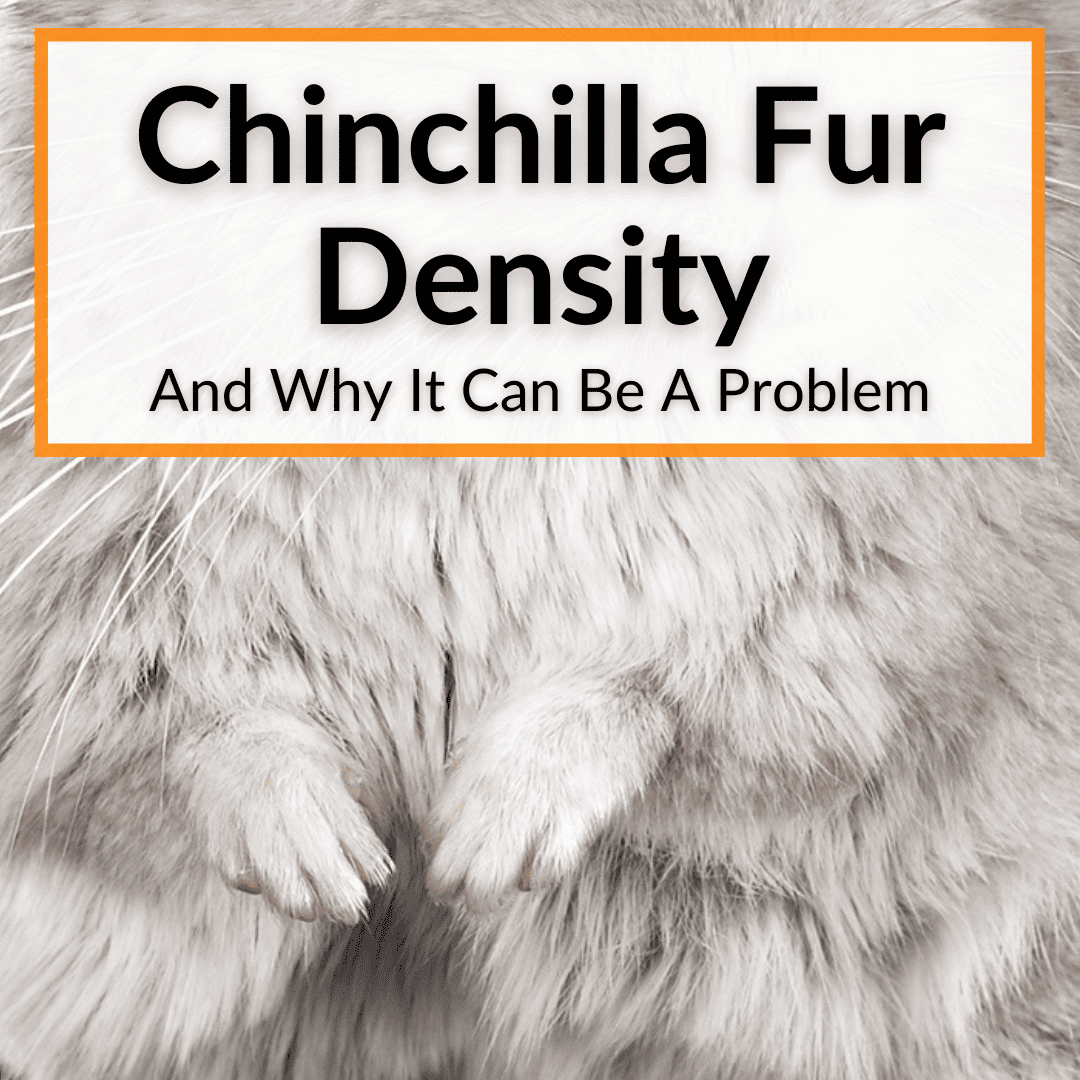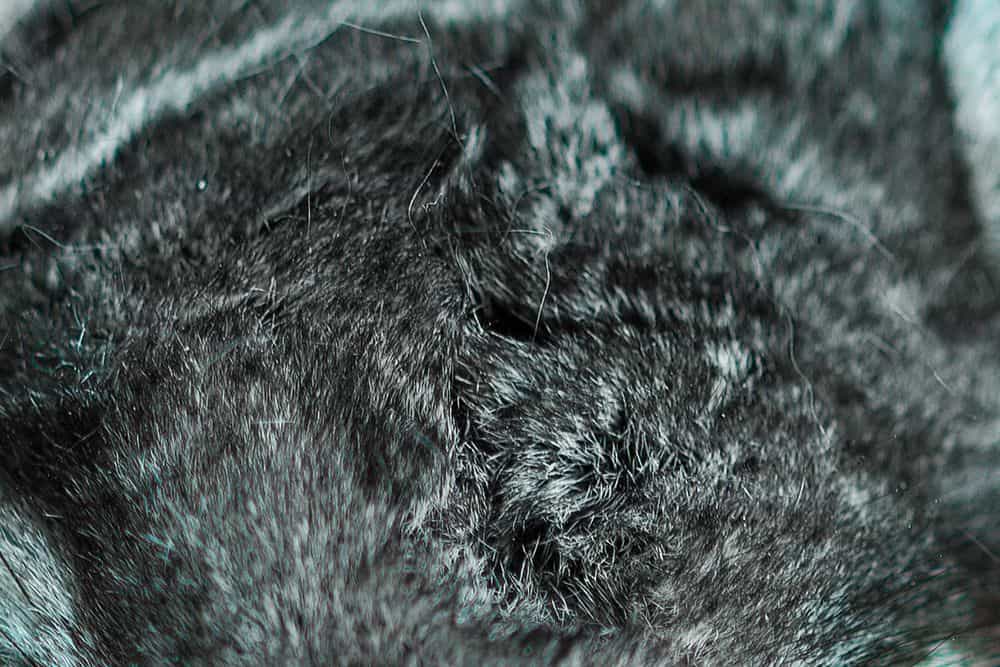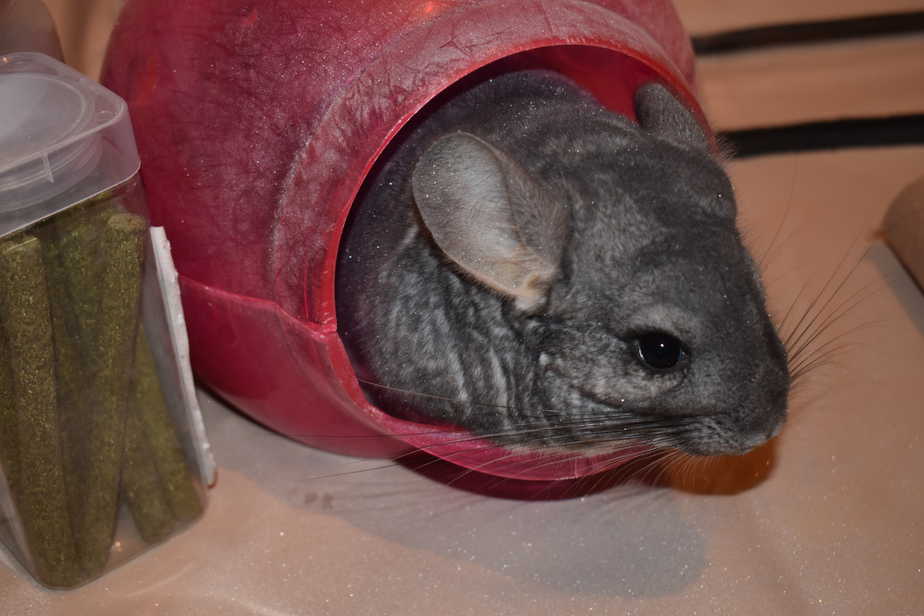
They are also cute and cuddly. And relatively easy to care for.
Given all that, it comes as no surprise that they are becoming more and more popular as pets.
But it is the softness we are interested in today.
The chinchilla fur density is what makes them so soft.
Fur density refers to the number of hairs that grow on a specific area of skin.
Keep reading to learn exactly how dense chinchilla fur is and what that means for them. And for us as owners.
Contents
How Dense Is Chinchilla Fur?
Chinchillas have an extremely high fur density, with around 80 to 100 hairs growing from each hair follicle. This means that a chinchilla has more than 20,000 hairs per square centimeter on its body!
This extra-dense fur results in the fluffy and soft coat that is a major characteristic of the chinchilla. In fact, they are one of the softest animals on the planet.
This fur affords them protection in the harsh environment of their natural habitat. But it can also cause them problems if they are living in a warmer climate. And most pet chinchillas are in warmer climates.
Naturally Dense Fur

Chinchillas are home to the Andes Mountains, where they rely on their thick fur to protect them from the cold, and often harsh, conditions. They have evolved over time to develop a highly efficient fur coat, with each hair shaft being fine, straight, and able to trap air to insulate against the cold.
Thick and soft fur is not just important for keeping your pet warm. It also protects it from injury. Dense fur can act as a cushion, preventing your pet from suffering cuts or scrapes when it hops or jumps.
One way to tell if your chinchilla has high fur density is by gently blowing on its fur. If you notice that the fur parts and reveals bare skin, your chinchilla may have lower fur density. On the other hand, if the fur remains intact and the skin is not visible, your chinchilla has a higher fur density.
Texture
The texture of a chinchilla’s fur is also important. Chinchillas have two kinds of hair: the soft, downy undercoat and the longer guard hairs that form the outer layer.
Their guard hairs are what give chinchillas their unique, fluffy appearance. They can range in color from silver-gray to beige.
When these hairs are healthy, they are straight and glossy, and will naturally repel dirt and moisture. However, if your chinchilla is kept in damp or dirty conditions, its fur can become matted and dull, leading to skin infections and health problems.
Maintaining Healthy Fur
One way to maintain your chinchilla’s coat health is to groom it regularly. Most of the time, you don’t actually need to do anything, except provide your pet with a dust bath at least twice a week.

You chinchilla will then clean its own fur by rolling around in the dust and having a blast. This helps remove excess oil and dust from its fur, which could dull the coat and reduce the fur density.
You should also provide your pet with a healthy diet, consisting of hay and pellets, to ensure its fur remains healthy and shiny.
Sometimes you may need to do a bit of extra grooming. You can use a soft-bristled brush or comb to remove loose fur, dirt, and debris. This can also help distribute the natural skin oils, which moisturize their fur and keep it healthy and shiny.
Different Densities
Another thing to keep in mind is that chinchilla fur density varies from one area of the body to another. The highest fur density is found on the back and tail, while the chest and stomach have a much lower fur density.
Understanding this can help you make decisions about which areas of your body you can expose to the elements without endangering its health. For example, it is usually okay to trim the fur around your pet’s bottom to help it stay clean and hygienic, but you should never shave their backs or tails, since this would leave them exposed and vulnerable to the cold.
Chinchilla Fur Density: Final Thoughts
The extremely high chinchilla fur density is the reason their fur is among the softest of all animals on earth. This dense fur evolved to protect these rodents from the cold weather in their natural habitat.
Unfortunately, it also had the negative side effect of making chinchilla appealing to us humans, especially for use in coats. And because chinchilla coats are so expensive, they attract the worst kind of human: the narcissist who buys a coat made from hundreds of dead chinchillas to wear a single time, just to show off his wealth and make himself feel superior. Most people know him as Floyd Mayweather.
But for us chinchilla owners, the more important drawback of a chinchilla’s dense fur is that they overheat easily. We must always make sure the temperature and humidity stay within the ideal range.
Leave a Reply